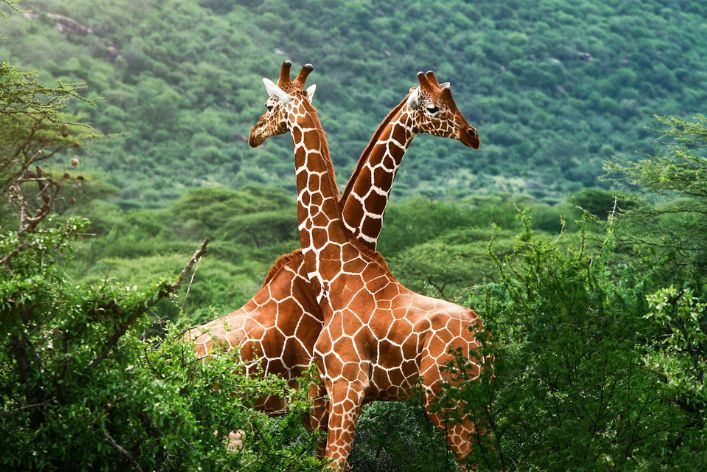Last Updated on July 14, 2022

Africa is the oldest inhabited continent on Earth, earning it the moniker “Mother Continent.” Africa has been home to humans and their ancestors for more than 5 million years.
The Atlantic Ocean, the Mediterranean Sea, the Red Sea, and the Indian Ocean all encircle Africa, the second-largest continent. The Equator divides it approximately evenly in half.
The physical geography, environment, and human geography of Africa can all be taken into consideration separately. Today, its resources are the main focus.
For more facts about Africa, click here.
Mining and Drilling

Important metals and minerals are produced in large quantities throughout Africa. Uranium, which is used to create nuclear energy, platinum, which is used in jewellery and industrial applications, nickel, which is used in stainless steel, magnets, coins, and rechargeable batteries, bauxite, which is the primary ore of aluminium, and cobalt, which is used in colour pigments, are among the metals that African nations export.
Gold and diamonds are the continent’s two most profitable mineral resources. About 483 tonnes of gold, or 22% of global production, were produced in Africa in 2008. Nearly half of all the gold produced in Africa is produced in South Africa. Other significant gold producers include Tanzania, Ghana, Guinea, Mali, and Mali.
Global diamond sales are dominated by Africa. The continent generated 55% of the diamonds in the world in 2008. The biggest diamond-producing nations in Africa are Botswana, Angola, South Africa, the Democratic Republic of the Congo, and Namibia.
Unfortunately, the diamond industry has both started and sponsored a number of wars and conflicts throughout Africa. Conflict diamonds or blood diamonds are the names given to diamonds that originate in these areas.
There are certain oil and gas resources in Africa that are drilled for energy and fuel. The continent contributed 6.45% of the world’s natural gas production and 12.5% of the oil production in 2007. In Africa, the oil sector is dominated by Nigeria, Libya, Algeria, Egypt, and Angola. On the continent, oil exploration has substantially risen, and many nations are attempting to become first-time producers.
Production of oil and natural gas has also been linked to civil unrest. Since the early 1990s, rebel groups in Nigeria have attacked oil infrastructure and taken oil from pipelines. These organizations—mostly ethnic minorities—claim that foreign oil firms have taken advantage of their labour while taking the majority of the profits. They claim that outdated machinery has seriously contaminated the air, soil, and water resources.
Losses in fish populations and arable land have been caused by this pollution. However, because they have damaged equipment, these guerrilla organisations’ violent operations have also exacerbated pollution. Because many businesses were forced to close as a result of the attacks, production and local income were also decreased.
Climate and Agriculture

Africa’s agriculture, which is thought to be the most significant economic activity on the continent, is significantly influenced by climatic variables. Two-thirds of the working population on the continent depend on agriculture, which accounts for 20 to 60% of the gross domestic product(GDP) in each nation. The worth of all the goods and services produced in a nation in a given year is measured as GDP.
Tropical wet, savanna, desert, Mediterranean, and highland are significant climatic areas for agriculture. Along the east coast of Madagascar, the Gulf of Guinea, and the Equator, tropical wet conditions are present. Year-round, the temperature hovers at about 27° Celsius (80° Fahrenheit). Between 152 centimetres (60 inches) of annual precipitation in the interior to 330 centimetres (130 inches) on the coasts. Plantains, pineapples, coffee, cocoa, and oil palms are significant crops in Africa’s tropical wet regions.
A large portion of eastern and southern Africa has savanna-like characteristics. Compared to tropical wet regions, the temperatures here are colder and more fluctuating. The amount of rain each year ranges from 50 to 152 centimetres (20 to 60 inches). In the savanna, the dry season may extend up to six months. Cassava, which is related to potatoes, peanuts, peppers, okra, eggplant, cucumber, and watermelon are important savanna crops. Here, millet and sorghum, two of Africa’s most significant grain crops, are farmed.
In northern Africa, particularly in the Sahara and the Sahel, desert conditions exist. On the hottest days, the temperature can reach 54° Celsius (130° F), while the coldest nights can be below zero. The maximum amount of precipitation each year is 25 centimetres (10 inches), while some regions have prolonged droughts. Date palms and cotton are significant desert crops.
The most northern and southern shores of Africa experience a Mediterranean climate. These areas get mild winters, dry summers, and little to moderate rainfall. Figs, olives, oranges, tomatoes, onions, and big vegetables like cauliflower and cabbage are all significant crops.
Highland conditions can be found in Africa’s highest elevations, especially in the Ethiopian Highlands. Compared to the nearby lowlands, this area has substantially colder temperatures. The direction of the mountain in relation to moisture-carrying winds affects precipitation. A few significant highland crops are wheat, potatoes, and alfalfa.
Forestry and Fishing

In Africa, forestry—the management of trees and other plant life in forests—is a significant economic activity. More than any other continent, Africa’s gross domestic product (GDP) is typically 6% derived from forest products. Africa has a large amount of forest cover, with 0.8 hectares (2 acres) of forest per person, compared to 0.6 hectares (1.5 acres) worldwide. The forest sector generates more than 60% of GDP in central and western Africa, the regions with the greatest amounts of forest cover.
A large amount of money is made through the export of forest goods, particularly premium woods like mahogany and Okoume. The Congo Basin nations of Cameroon, Central African Republic, Republic of the Congo, the Democratic Republic of the Congo, Gabon, and Equatorial Guinea, where there is a deep rainforest, are where these woods are most commonly found.
For instance, Okoume accounts for 90% of Gabon’s tree harvesting. Typically, these woods are shipped to Israel, Japan, and the European Union. Everything from homes to musical instruments to light aeroplanes is made of mahogany and Okoume.
However, illicit logging and overharvesting of some tree species harm Africa’s forest industry. Many Okoume and mahogany species are in danger of extinction. Overharvesting, in the opinion of experts, will eventually ruin forest habitats. The rainforest habitat in which these trees thrive is being destroyed for agriculture and development, and saplings that were planted to replace the logged trees do not grow quickly enough to be picked on a regular basis. Africa is currently split between safeguarding these natural landscapes from overdevelopment and using its forests to the utmost extent economically.

More than 10 million people in Africa make a living from the $2.7 billion in annual exports of the continent’s fishing industry. All of Africa’s oceanic coasts have fisheries, in addition to its interior. For example, vast freshwater fisheries are supported by the Nile River and the Great Lakes.
Many African coastal nations depend on their marine resources. With 4.5 million tonnes of fish produced there in 2000, West Africa is one of the world’s most economically significant fishing regions. Additionally, significant players in the marine fish market are Namibia and South Africa, which yearly export 80 to 90% of their total fish production.
More than 3,000 different fish species can be found in Africa’s huge inland fisheries, which produce two-thirds of the world’s inland fish.
For more things Africa is famous for, click here.
Before you go…
Hey, thank you for reading this blog to the end. I hope it was helpful. Let me tell you a little bit about Nicholas Idoko Technologies. We help businesses and companies build an online presence by developing web, mobile, desktop and blockchain applications.
As a company, we work with your budget in developing your ideas and projects beautifully and elegantly as well as participate in the growth of your business. We do a lot of freelance work in various sectors such as blockchain, booking, e-commerce, education, online games, voting and payments. Our ability to provide the needed resources to help clients develop their software packages for their targeted audience on schedule is unmatched.
Be sure to contact us if you need our services! We are readily available.











